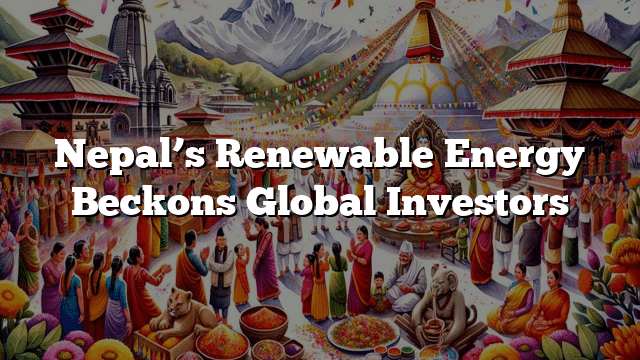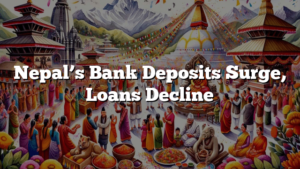
In a compelling call to action, Nepal’s Minister of Energy, Water Resources and Irrigation, Shakti Bahadur Basnet, has urged both domestic and foreign investors to participate in the government’s ambitious campaign to harness the country’s abundant renewable resources. Addressing a session titled ‘Navigating Nepal’s Renewable Energy Potential’ at the 3rd Nepal Investment Summit-2024, the minister highlighted the government’s determination to exploit Nepal’s vast renewable energy potential.
“The government of Nepal is moving ahead with an ambitious target in the power sector. Our plans and programmes are almost taking the shape of a campaign for aggressively harnessing Nepal’s renewable resources. So, I want to request foreign investors to take part in the government campaign,” Minister Basnet said.
Recognizing the need for substantial investment, the minister revealed that the government is working to create a conducive environment for the issuance of international green bonds by prospective issuers. This strategic move aims to attract foreign resources and accelerate hydropower development in the country, aligning with the government’s ambitious plans.
Minister Basnet highlighted the recent agreement signed between Nepal and India to export 10,000 MW of electricity over the next decade, as well as the ongoing process to export electricity to Bangladesh. These initiatives have ensured a robust market for Nepal’s renewable energy, further incentivizing investment in the sector.
“We have a target to consume 13,500 MW of electricity in the domestic market and export 15,000 MW to neighboring countries; we need around USD 46.5 billion investment to realize this. So, we need foreign direct investment to achieve this target,” he emphasized.
During the parallel session entitled ‘Navigating Nepal’s Renewable Energy Potential,’ moderated by former government secretary Dinesh Kumar Ghimire, experts and industry leaders highlighted the immense potential of Nepal’s renewable energy sector and the need for increased private sector participation.
Sagar Raj Gautam, presenting a paper on Nepal’s renewable energy potential, underscored that despite having a vast hydropower resource, the installed capacity had reached only 3,200 MW. He called upon the private sector, both domestic and overseas, to increase investment and optimize hydropower generation.
Echoing the sentiment, Kul Man Ghising, Managing Director of the Nepal Electricity Authority (NEA), emphasized the authority’s focus on infrastructure development, including substations, transmission lines, and distribution networks. “Our focus is to construct infrastructure to strengthen local supply along with cross-border trading. For that, we need a huge investment, and I want to request all, including development partners and development finance institutions, to increase investment in power generation and transmission lines as well,” he said.
Ganesh Karki, President of the Independent Power Producers’ Association (IPPAN), urged foreign investors to increase their investments in hydropower, Nepal’s major investment sector. He emphasized the need for clear guidelines regarding tariffs, licensing, environmental regulations, and project approvals to attract private sector investment.
Arjun Kumar Gautam, Chief Executive Officer of the Hydroelectricity Investment and Development Company Limited (HIDCL), expressed the company’s willingness to be a financing partner for local and foreign developers, highlighting the need for substantial foreign direct investment to harness Nepal’s hydropower potential and achieve the target of generating 28,500 MW of electricity by 2035.
Representatives from the Asian Development Bank (ADB) and the World Bank reaffirmed their commitment to supporting Nepal’s hydropower development through concessional loans, capacity building, and technical assistance. They emphasized the need for a diversified energy mix, including reservoir-based mega hydropower projects, to ensure energy security in Nepal and the South Asian region.
Youngjin Hong, Managing Director of the Nepal Water and Energy Development Company, stressed the importance of a stable policy environment and streamlined procedures to attract both domestic and foreign investment in Nepal’s hydropower sector.
As Nepal embarks on an ambitious journey to unlock its renewable energy potential, the call for global investment echoes loud and clear. With a conducive environment, favorable policies, and robust international partnerships, the country stands poised to harness its natural resources and pave the way for a sustainable and prosperous future.
Related:



